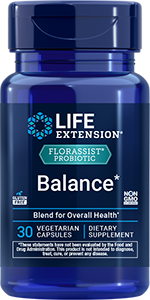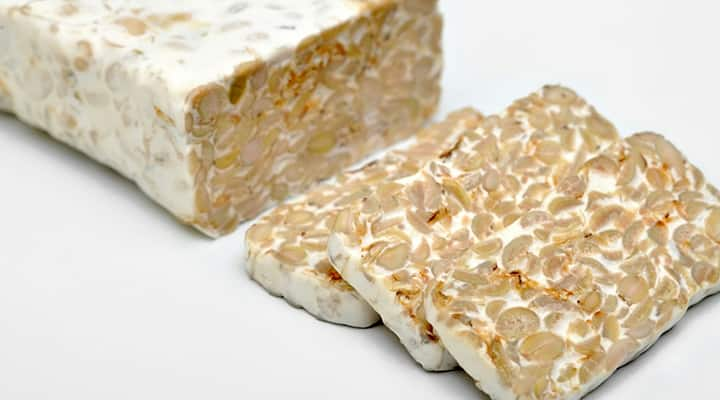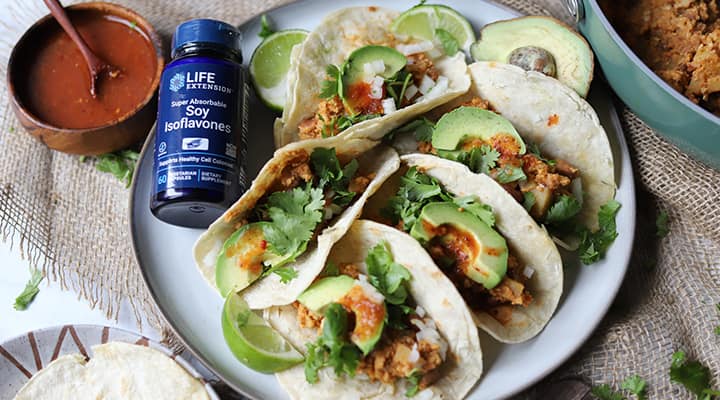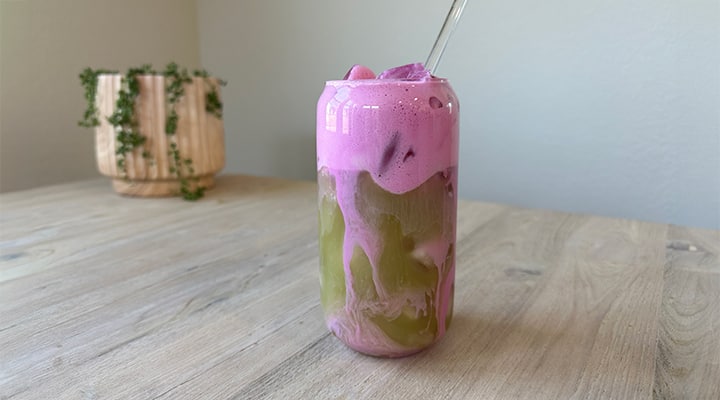
Tempeh vs Tofu: Which Is Better? (+ Recipe)
Published: October 2022
Eating vegetarian and vegan has never been easier, thank to "Meatless Mondays" and the proliferation of meat alternatives in health-food grocery stores. Plant protein products allow cooks to make alterations to their favorite dishes without sacrificing flavor.
While they aren't quite the same nutritionally as animal-based protein, these plant-based products provide plenty of beneficial nutrients, such as prebiotic fiber, phytoestrogens, proteins and minerals. So bring on the vegan-friendly recipes—you won't even miss the meat!
Wondering which meatless marvel to try next at your dinner table? Some popular plant-based protein options include tempeh and tofu. Here's how to decide between these two tasty vegetarian staples.
Are tempeh and tofu the same?
Tofu and tempeh are soy-based vegan meat substitutes that are extremely versatile and nutritious. Although they are both made from soy, they are very different. Tofu is made from condensed, curdled soy milk and has a mild, almost flavorless taste. The curds are drained and packaged in blocks with textures from very soft (called silken tofu) to firm and extra-firm. Tofu takes on whatever flavor is added to it, and it can be used in everything from smoothies to stir-fries. This makes tofu a favorite vegan food for many—even those not on a plant-based diet.
Tempeh is a cake-like block made from soybeans and fermented. It has a dense texture and can be sliced, shredded or crumbled for use in place of meat. It has a nutty and very distinct taste. I often describe the taste as "funky," as there is really nothing like it, but others liken it to mushrooms. Tempeh has a firmer and lumpier texture than tofu, and manufacturers sometimes combine it with nuts, seeds or whole grains.
Over the years, I have learned to enjoy tempeh. Like tofu, it is an excellent source of plant-based protein and a great replacement for meat in many vegan and vegetarian recipes.
Tempeh vs tofu: Which one is healthier?
Although both are healthy elements of a Japanese diet, tempeh is less processed than tofu, and it includes the probiotic health benefits of fermentation. It contains the whole soybean, so it is higher in fiber and protein than tofu. However, both are rich sources of isoflavonoids, which are the phytoestrogens mainly responsible for the health benefits of soy. Both are also good sources of the amino acid tryptophan, which your body uses to make the "happy hormone" serotonin. And for those who are counting, tofu comes with fewer carbs and fewer calories.
Does tempeh taste better than tofu?
Some people have a hard time getting used to the taste of fermented soybean. Tofu itself is flavorless and takes on the taste of the ingredients that are mixed with it. So which tastes better is really a matter of personal preference and may depend on the recipe it is used in. I do like tempeh, but it needs heavy flavoring to taste good to me. Tofu is more versatile because its taste does not compete with other foods. Most people prefer tofu in the beginning of their plant-based journey. After time, their choice may change, especially for vegan meat dishes.
Seitan vs. Soy
We have many choices when it comes to vegan and vegetarian protein. There are well-known soybean products like tofu, tempeh and natto. But wheat products like seitan are also a plant-based option for those who tolerate gluten well. Seitan (pronounced say-tan) is made from wheat gluten, and it is soy-free.
Known as "wheat meat," seitan can be prepared like tofu, and it takes on the flavors of the ingredients it is mixed with just as easily as tofu does. On its own, seitan has a mild bready flavor that some compare with mushroom or very bland chicken breast. But seitan shines as a meat alternative because it has a dense and chewy texture like meat.
On the nutrient side, although soybean tofu is a good, complete protein choice, seitan is even higher in protein, and it is lower in fat. (Seitan also has more carbs, so beware if you follow a keto diet!) Seitan also has selenium, iron, phosphorus and calcium, but check the label before you buy—some manufacturers add a lot of sodium to their packaged products.
How many calories in tofu vs. tempeh?
Both of these forms of soybean are relatively low in calories and protein-rich. But tofu is lower in calories and carbs. In three-ounce portions, tempeh contains 140 calories and tofu contains 80 calories. On the other hand, with its base of soy milk, tofu is also lower in fiber and protein, and it doesn't have the health benefits that come from the fermentation process.
Is tempeh a superfood?
By definition, a superfood is a food rich in nutrients that are beneficial to health. Since fermented tempeh has so many health benefits, many consider this form of soybean to be a superfood. It is high in protein, fiber and minerals, and it has antioxidant properties and heart health benefits.
Is tempeh probiotic or prebiotic?
Talk about a complete food—tempeh has both! Probiotics are helpful bacteria that support a healthy gut biome. Prebiotics are a type of fiber that encourages the growth of beneficial bacteria in the gut. Thanks to fermentation, tempeh is rich in probiotics—and it has plenty of prebiotic fiber as well.
Explore Our Best Energy Management Supplements
Is it healthy to eat tempeh every day?
This food can be a healthy way for vegans and vegetarians (or anyone avoiding meat-based dishes) to consume plant-based protein, fiber and probiotics. Like tofu and seitan, tempeh is a good choice for healthy vegan recipes and delivers a wealth of beneficial compounds. Because it is a soybean product, you may want to check with your doctor about eating it every day—not everyone should eat soy daily.
Who should not eat tempeh?
People with a soy allergy should avoid all soy products, which includes tofu and natto. For them, the wheat gluten product seitan may be a better choice. The same goes for people who are sensitive to fermented foods. If you have any health concerns, talk with a doctor or healthcare provider before adding soy products or soy protein to your diet.
Should tempeh be cooked?
Tempeh is cooked and fermented before being pressed into cakes, and most manufacturers pasteurize it. That means it can be eaten straight from the package without cooking it first, but this is not recommended; it will not taste good! Instead, most people steam it before seasoning and cooking it.
Tempeh recipe idea: Tempeh tacos
The taste and firm texture of this food is so distinct. That is why I like to put my tempeh into a blender and pulse it until it resembles meat-like crumbles. In small pieces with ample seasoning, tempeh almost resembles chorizo in taste and texture, and it is easy and enjoyable to eat. That makes this vegan taco recipe the perfect introduction for a beginning tempeh eater. This recipe serves 6 (with 2 tacos per serving) and is ready in 30 minutes.
Ingredients
- 1 tbsp avocado oil
- 1 block tempeh
- 2 cups diced potatoes
- 1 yellow onion diced small
- 1 clove garlic minced
- 1 tbsp smoked paprika
- 1 dash cayenne pepper
- 1 tsp chili powder
- ¾ cup water
- ½ tsp salt
- 12 corn tortillas
- ½ cup salsa of choice
- 1 cup diced cilantro
- 2 avocados sliced
Preparation
- Add tempeh to a blender or food processor and pulse until it resembles the texture of meat crumbles.
- In a large, deep sauté pan over medium heat, add oil and cook the onion and garlic for 5 minutes, stirring often.
- Add potatoes and cook for 10 minutes, stirring occasionally.
- Add blended crumbles, smoked paprika, cayenne pepper, chili powder, salt and water and cook covered until potatoes are tender, about 10 minutes.
- Warm the tortillas on a griddle for 2 minutes each side until they are pliable. Add your taco mix and top with cilantro, salsa and sliced avocado.
Nutritional Values (per serving of 2 tacos)
Calories: 387
Carbohydrates: 49 g
Protein: 14 g
Fat: 18 g
Saturated Fat: 3 g
Polyunsaturated Fat: 4 g
Monounsaturated Fat: 10 g
Sodium: 381 mg
Potassium: 1004 mg
Fiber: 11 g
Sugar: 3 g
Vitamin A: 1065 IU
Vitamin C: 23 mg
Calcium: 118 mg
Iron: 3 mg
Do I get enough soy isoflavones from tempeh?
Tempeh is rich in soy isoflavones. Because they have antioxidant properties, isoflavones have a number of health benefits, including helping maintain healthy cell function and supporting bone and heart health. To fill any gaps in your nutrition, a supplement might be a better choice than trying to eat large amounts of soy every day.
Soy isoflavones supplements
In addition to supporting cardiovascular, cellular and bone health, soy isoflavones also support healthy hormonal activity. A supplement like Super Absorbable Soy Isoflavones makes getting those beneficial compounds easy and convenient.
References
- Noer, ER, Dewi, L, Kuo, CH. "Fermented soybean enhances post-meal response in appetite-regulating hormones among Indonesian girls with obesity." Obes Res Clin Pract. August 2021. https://pubmed.ncbi.nlm.nih.gov/34147377/
- Wiginton, K. "The Health Benefits of Tempeh." WebMD. July 2021. https://www.webmd.com/food-recipes/tempeh-health-benefits








